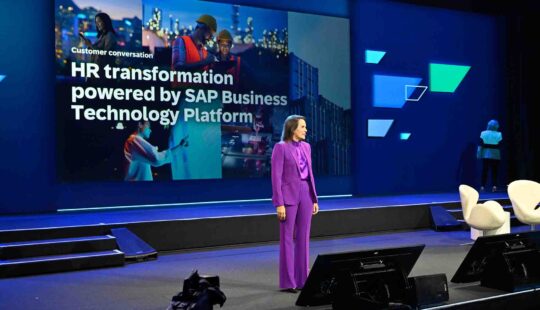Companies that provide a great experience win with their employees and organizations that have employees who feel cared for experience business wins. In other words, experience wins — always.
Of course, that’s easier said than done, especially in the era of COVID-19. Some people work remotely while others are onsite. So providing a consistent experience — never mind a good one — is especially challenging. But organizations must provide an exceptional experience to everyone — whoever they are, whatever they do, and wherever they do it. Give your people more and better, and you’ll get more and better from them. Recent data confirms this, even amid unprecedented disruption.
According to the Thrive XM Index 2020 report, companies that prioritized the employee experience not only performed better once COVID-19 hit, but many of them actually grew. In other words, a better employee experience yields measurable results; most notably, increased productivity and engagement.
Similarly, a Towers Watson study found that organizations with a strong employee experience saw a four percent growth in revenue, while those with a poor experience had a one percent decline in revenue. The same is true for profit margins: a three percent growth in one-year gross profit for companies with a strong experience, and a 10% drop for those with a weak employee experience. That’s likely why Forrester’s 2021 Close the Employee Experience Gap study found that 78% of human resources (HR) leaders think employee experience will be one of the most important factors contributing to achieving business objectives within two years.
In today’s complex work environment, here are seven ways organizations can provide a winning experience that drives better outcomes.
Listen and respond in real time.
The more employees are heard, the more valued they feel. Creating a constant feedback loop between employees and HR not only transforms the employee experience, but it also drives resiliency and better business outcomes over time.
Foster new ways of learning.
The more you invest in training people to perform better in their roles (or prepare them for new ones), the more people feel ready to take on new challenges. It also costs significantly less to train than to hire. Australian firm Newcrest Mining used interactive solutions to save $1.6 million in training costs in the first six months alone — and quickly improved talent mobility so people feel they have careers, not just jobs.
Focus on people’s well-being.
Employee well-being is just good business. The Thrive XM Index 2020 Report showed that companies that focus on well-being enjoy stronger feelings of organizational trust and belonging, and realize significantly higher revenues per employee. And you cannot promote well-being without a commitment to diversity, equity and inclusion (DEI) efforts. A strong sense of belonging is tied to increases of up to 34% in engagement, 31% in retention likelihood, and 13% in performance.
Use HR cloud and modern workforce tools that make life easier.
Delivering HR excellence with consistent, consumer-grade experiences to 77,000 employees in 52 countries at Whirlpool using global processes supported by shared services freed up HR business partners and centers of excellence from administrative and transactional activities, creating 80 to 85% more capacity.
Build new processes around people.
Most organizations think first about how technology can save on costs or boost productivity, then wedge people in alongside the solutions. Instead, companies should think about what people want and what they need to be successful, then find appropriate solutions. This includes helping people get down to business faster. From recruiting to onboarding candidates, the experience should be personal, dynamic, and hiccup-free.
Manage the managers’ experience.
Most people only interact with HR on their first and final days at the company. In between that time, a person mostly interacts with a manager, the gatekeeper of the employee experience. That is why it’s critical that managers are trained, supported, and have access to the right resources to provide the best coaching and development of their people.
Elevate well-being and safety.
People should know that their companies have their backs in any crisis. That means using cloud tools to help ensure emergency contacts are in place and knowing who holds business-critical roles. In the event of a crisis, the organization also needs clear insights on what employees are thinking and expecting so HR can take quick action.
These are all good places to start. But providing a winning experience needs to be an always-on, executable strategy that is central to the efficacy of the HR function and, in turn, the business. Here’s a North Star principle that’s easy to follow and insert into every idea or initiative: The better people are treated, the better they perform.
Winning means making progress, and it takes work. There’s always room to improve. According to the Forrester study, the number of HR decision makers who say employee experience is the most important aspect of their HR strategy has nearly tripled over the last two years. Yet only 24% of HR teams have an executive sponsor for their experience efforts and 71% say it’s a challenge to gather real-time information. But a good experience is a business imperative: 77% of HR leaders said that employee experience initiatives have increased revenue, and 61% said these efforts have improved profitability.
Still, no one solution fits every organization, and every company has to chart a path that best suits its people. But the best part is that we now live and work in an age where innovations can be shared and improved upon — as they should be, so that both people and companies alike experience wins as often as possible.
What’s your win? Every day is a chance to experience wins when you embrace human experience management (HXM). From learning a new skill to helping a colleague or team member, moments of progress can create lasting impact. Post a video, a photo, or join the conversation in comments and share your wins using #ExperienceWins and #HXM on social media.
Visit www.sap.com/experiencewins to learn more about human experience management solutions from SAP.
April Crichlow is global vice president and head of Marketing for SAP SuccessFactors.



